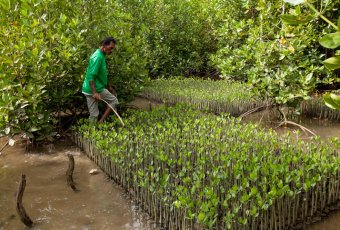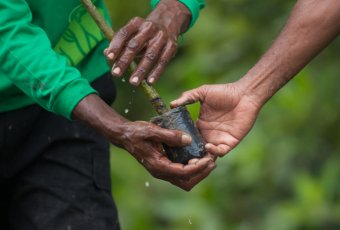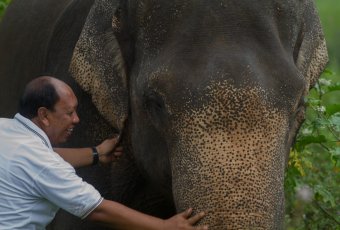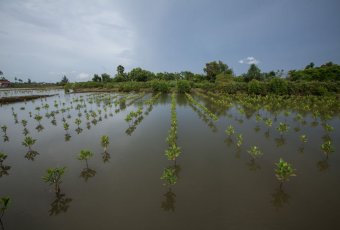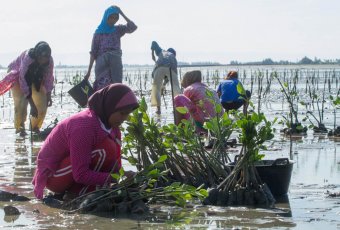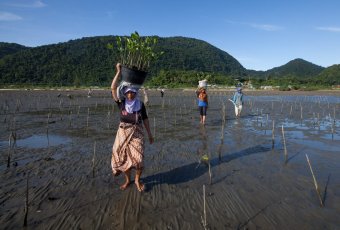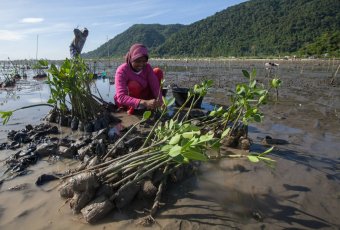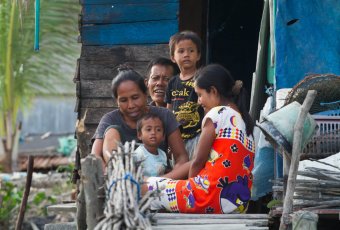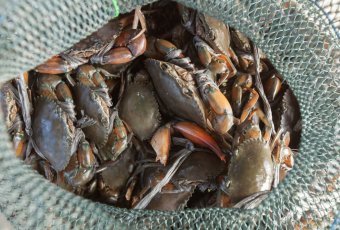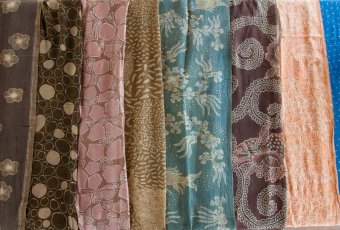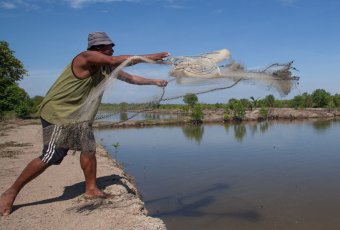The context
Did you know that mangrove belts of several hundred meters wide could significantly reduce the flow of a tsunami? In 2004, the tsunami that hit the coastal regions of Aceh and North Sumatra provinces in Sumatra island, Indonesia, took away 220,000 lives. The region’s mangrove forests had been highly deforested, mainly due to intensive aquacultural practices leading to convert mangrove forests into ponds.
Livelihoods-mangrove restoration project is located in the province of North Sumatra in Indonesia, which has steadily lost its mangrove forests over the past decades. In 1987, it had 200,000 hectares of mangroves. Today, less than half of that amount remains, with only 83,000 hectares standing. The mangrove forests were destroyed due to the island’s rapid industrialization: mainly to ponds for shrimp production but were also converted into rice fields, and plantations for palm oil.
The project
Launched in 2011, Livelihoods-Yagasu project restored mangrove forests, and as a result, increasing the resilience of the local population from erratic climatic events. Replanting coastal mangroves significantly buffers coastal communities from future tsunamis akin to that of the 2004 tsunami. Mangrove forests also contribute to restore vital agricultural land. The intensive shrimp farms that replaced the mangrove forests resulted in a massive influx of saline water that is preventing the growth of crops today. Additionally, this project generates new sources of economic income. Local villagers can now increase their revenues by selling the by-products of the mangroves such as fish, crabs, mollusks, and natural dyes that could be made from the parts of the mangrove tree.
Learn more about the new activities generated by mangrove forests
The social and environmental impact
Between 2011 and 2014, Livelihoods-Yagasu project helped plant 18 million mangrove seedlings on 5,000 hectares to rebuild a natural mangrove barrier, that is essential to maintain life in these fragile areas. The 18 million trees planted will sequester more than 2 million TeqCO2 over 20 years.
A second investment by Livelihoods Carbon Fund 2 to bring mangrove restoration at scale
In 2018, a new carbon project financed by Livelihoods Carbon Fund’s 2 investors is helping restore 5,000 additional hectares of mangroves, develop key economic opportunities for the local communities and sequester 2.5 million tons of carbon over 20 years.
Both Livelihoods-Yagasu projects will represent a total area of more than 1,800 kilometers that are vital for the local populations.
Our Partners
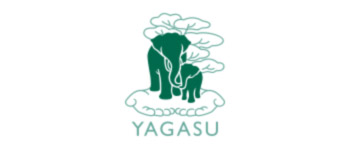
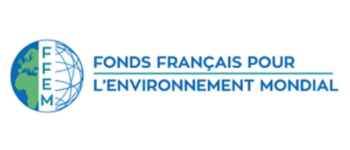
Learn more:
- About the new activities generated by mangrove forests: https://www.livelihoods.eu/indonesia-mangroves-spurring-new-businesses/
- An interview with Bambang Suprayogi, CEO of Yagasu NGO
“Livelihoods relies on a resilient model that can be replicated at global level”: https://www.livelihoods.eu/interview-with-bambang-suprayogi-yagasu/



